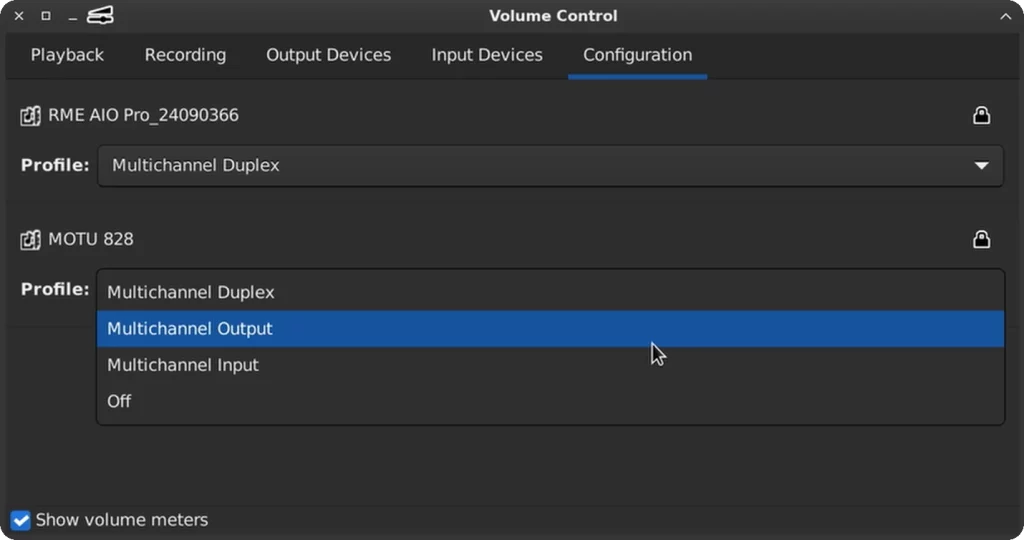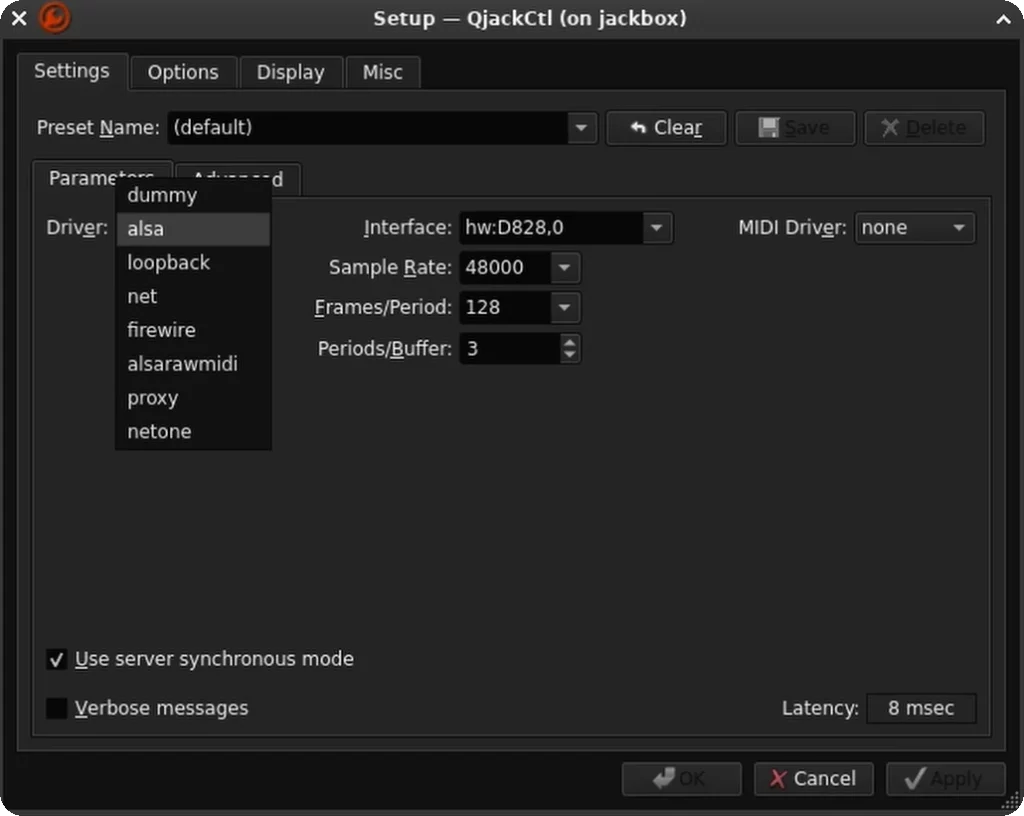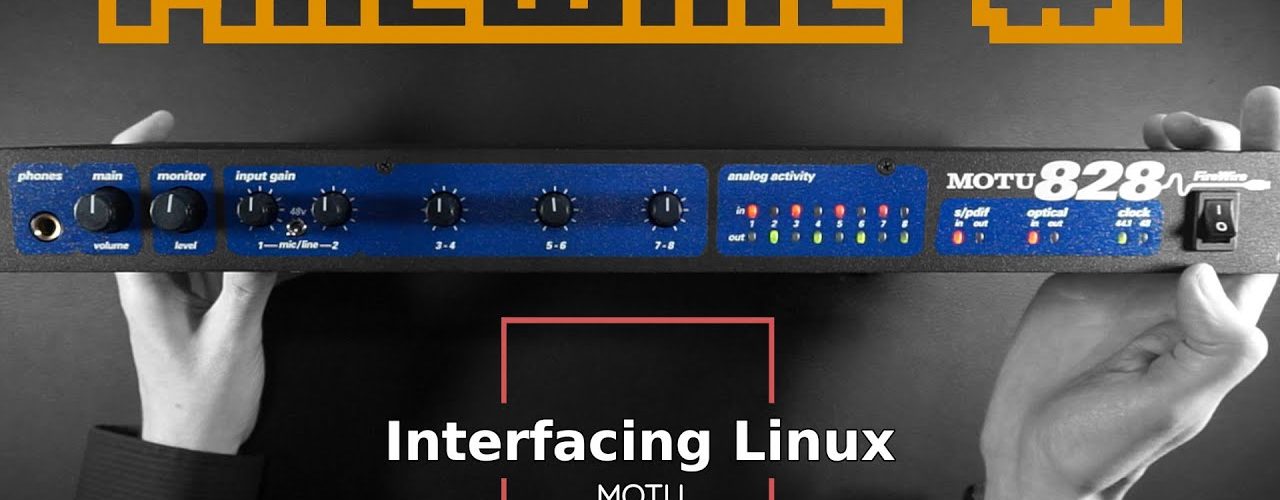In 2001 MOTU figured out how to shove audio through a FireNoodle. For £795, you could get a 1U steel box capable of 24-bit recording and a whopping 18 simultaneous inputs and outputs. Now, let’s see what it takes to get this beast working on a modern PC running Linux.
Have questions about your setup? Ask in our forums.
FIREWIRE IN 2023
This is the easy part. On Linux, you plug the FireWire card into the PCIe hole. You can’t go wrong with the Syba SY-PEX30016 or StarTech PEX1394B3. Both use the TI XIO2213B chipset and function identically.
Note: There is no such thing as a FireWire to USB converter. That thing you found on Amazon might as well be made of ham. It doesn’t work, not even a little bit.

DRIVERS
FireWire audio interfaces were about as class compliant as a rabid emu on a meth binge. Every manufacturer had their own way of doing things, and nobody released Linux drivers. This didn’t stop the FFADO project from reverse-engineering the protocols and releasing open-source drivers.
A bit later, snd-firewire-improve added FireWire support to the ALSA stack and is now included in the Linux kernel.
Having two sets of drivers to pick from might sound confusing, and that’s because it (expletive deleted) is. FFADO drivers were designed to work with the Jack sound server, while ALSA drivers work with Pulseaudio, PipeWire, and Jack. Aaand you can use FFADO drivers with Jack to connect to Pulseaudio by using a bridge.
A general rule of thumb is this. If you plan on using your FireWire interface as a sound card, stick with the ALSA drivers. Use the FFADO drivers if you need multichannel recording.
However, there are exceptions to every rule. Some FireWire interfaces only work with FFADO drivers, while others require ALSA.
The MOTU 828 is one of these wacky exceptions. It can connect to the Jack sound server using FFADO but refuses to pass audio. ALSA drivers to the rescue!
SOUND SERVERS
On Linux you can pick from ALSA, Jack, PulseAudio, and PipeWire. We’re going to focus on Jack and PulseAudio since I don’t have a spare PC to test with PipeWire at the moment.
Pulseaudio
The MOTU 828 functions like any other sound card using the ALSA drivers with PulseAudio. It will default to a two-in/two-out configuration.

Jack
Jack works as expected. Remember to select the ALSA driver and set your period size to 3.

If you prefer to launch Jack directly from the command line use the following.
jackd -R -S -P 70 -d alsa -d hw:D828 -r 48000 -p 128 -n 3CONFIGURATION
You will need to install ffado-mixer in order to configure the clock source, sample rate, and optical I/O.

ROUND-TRIP LATENCY
While many kinds of audio latency metrics exist, one useful and well-understood metric is round-trip latency; the time it takes for an audio signal to enter the input of a device, get processed, and exit the output.
The MOTU 828 isn’t going to win an award for low round-trip latency. I had to drop the buffer size to 32 @48K before it was usable for real time monitoring post FX.
Measurements were taken with jack_iodelay.
TESTBENCH
This is the parts list for the Linux DAW in the studio.
| CPU | AMD Ryzen 5 5600G |
| RAM | Corsair Vengeance LPX 16GB |
| Motherboard | MSI B550-A PRO |
| GPU | NA |
| SSD | Silicon Power 256GB NVMe |
| PSU: | EVGA 850 |
| Firewire: | Syba SY-PEX30016 |
| Network: | Intel i350-T4 |
| OS: | Debian 12 |
| Kernel: | 6.1 RT |
| Desktop: | XFCE 4 |
VERDICT
22 years later, the first FireWire audio interface is plug-and-play on Linux. Pretty cool, right? Not only that, but you can still use it to record a professional-sounding album in 2023. That’s because analog-to-digital conversion was pretty much figured out by 2001.
Unfortunately, Windows and macOS have dropped support for FireWire, leaving these devices at risk of becoming e-waste.
Have questions about your setup? Ask in our forums.
MOTU 828

The MOTU 828 offers 18 simultaneous inputs and outputs over analogue, S/PDIF and ADAT.
Pros
ALSA driver
ADAT
Cons
40dB preamps
Limited to 48kHz
No MIDI





Add comment